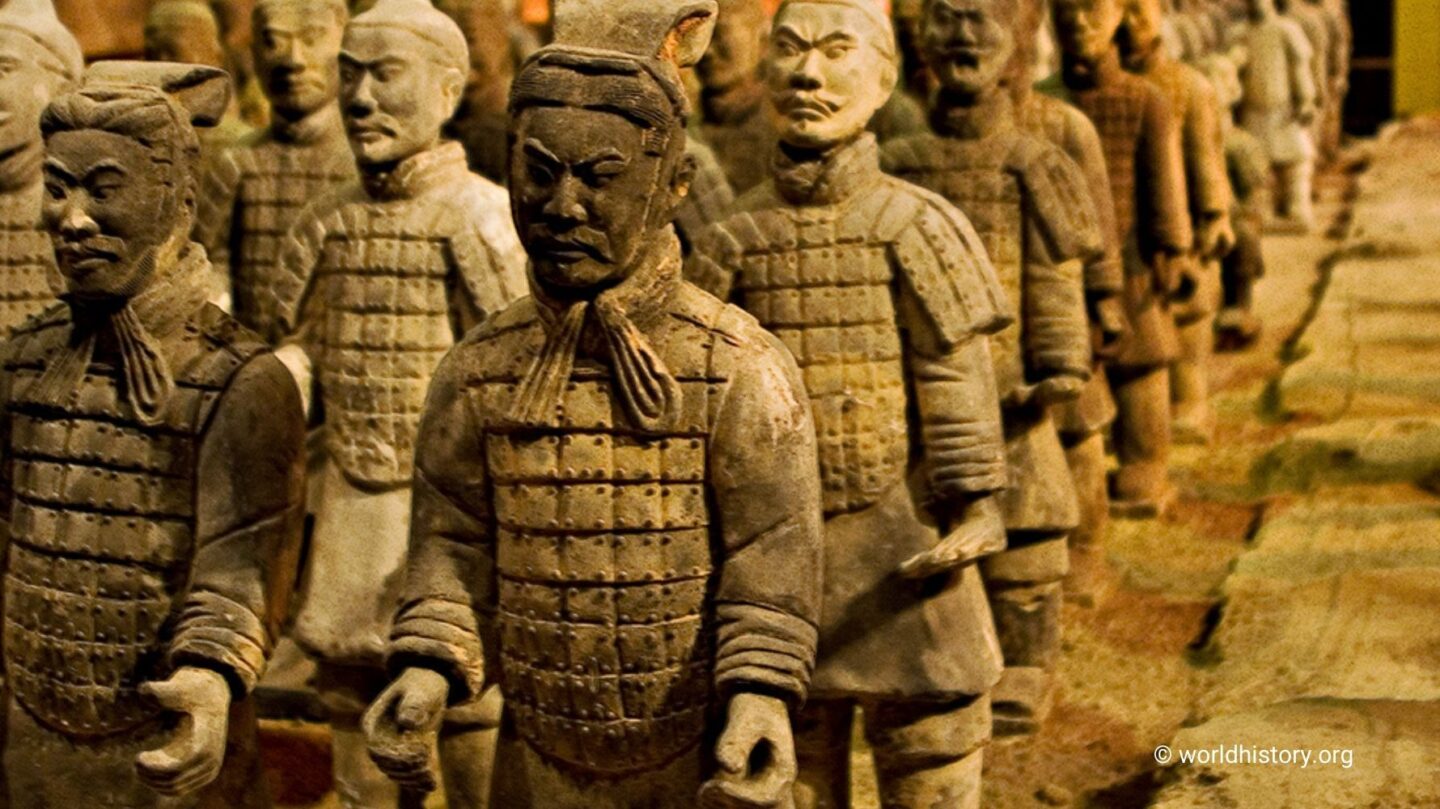The Discovery of a Hidden Wonder
In 1974, farmers digging a well in China’s Shaanxi Province stumbled upon one of the greatest archaeological finds of the 20th century: the Terracotta Army. Buried for over 2,000 years, this vast collection of life-sized clay soldiers was created to accompany Qin Shi Huang, China’s first emperor, into the afterlife. The discovery revealed not only the emperor’s grand vision for his eternal protection but also the sophistication of ancient Chinese craftsmanship.
The Terracotta Army is part of a massive funerary complex built for Qin Shi Huang, who unified China in 221 BCE and established the Qin Dynasty. This discovery has shed light on the ambitions, beliefs, and artistry of one of history’s most powerful rulers.
The Scope and Scale of the Army
The Terracotta Army is an astonishing feat of ancient engineering and artistry. Over 8,000 soldiers, along with horses, chariots, and weapons, have been unearthed so far, though many more are believed to remain buried. The figures are arranged in military formation within three large pits, with each soldier uniquely detailed, from facial expressions to hairstyles.
The soldiers are life-sized, standing about 1.8 meters (5 feet 11 inches) tall on average, with some officers slightly taller. Their intricate design demonstrates the incredible skill of the craftsmen who built them. Each figure was crafted using molds and then individually customized, making no two soldiers identical.
In addition to the soldiers, the complex includes acrobats, musicians, and court officials, suggesting that Qin Shi Huang intended to recreate his entire empire in the afterlife.
The Purpose Behind the Terracotta Army
The Terracotta Army reflects the beliefs and ambitions of Qin Shi Huang. In ancient China, the afterlife was seen as a continuation of earthly life, and the emperor’s tomb was designed to ensure his dominance even in death. The soldiers were meant to protect him and maintain his authority in the spiritual realm.
Qin Shi Huang’s obsession with immortality also played a role in the creation of this elaborate burial complex. Historical records suggest that the emperor sought elixirs of eternal life and spared no expense in building a tomb that would secure his legacy. The Terracotta Army was part of this grand vision, symbolizing both his power and his fear of mortality.
The Unexplored Tomb of Qin Shi Huang
While the Terracotta Army has been extensively studied, the emperor’s actual tomb remains largely unexplored. Ancient texts describe a vast underground palace containing rivers of mercury, illuminated by glowing pearls, and surrounded by traps to deter intruders. Modern technology has confirmed high levels of mercury in the area, lending credibility to these accounts.
However, concerns about preserving the site and the potential dangers of excavation have delayed efforts to explore the tomb. This leaves much of Qin Shi Huang’s burial complex shrouded in mystery.
A Window into Ancient China
The Terracotta Army provides invaluable insights into the culture, technology, and political organization of the Qin Dynasty. The mass production of the figures reveals advanced techniques in pottery and assembly-line methods, while the weapons found with the soldiers demonstrate the military innovations of the time.
The discovery also highlights the centralization of power under Qin Shi Huang, who unified China’s warring states and implemented sweeping reforms in law, currency, and infrastructure. The Terracotta Army stands as a testament to his vision of a unified and enduring empire.
A Legacy Set in Stone
The Terracotta Army remains one of the most significant archaeological discoveries in the world, attracting millions of visitors each year. It symbolizes not only the grandeur of Qin Shi Huang’s reign but also the enduring mysteries of ancient China.
As we continue to study this extraordinary site, the Terracotta Army reminds us of humanity’s timeless fascination with life, death, and the quest for immortality. It is a window into a distant past, offering a glimpse of the ambitions and beliefs that shaped one of history’s greatest civilizations.
